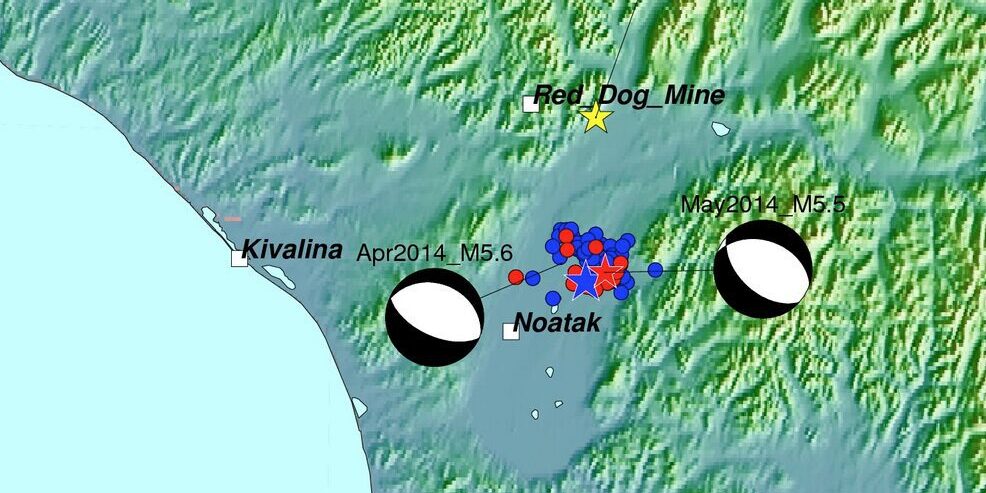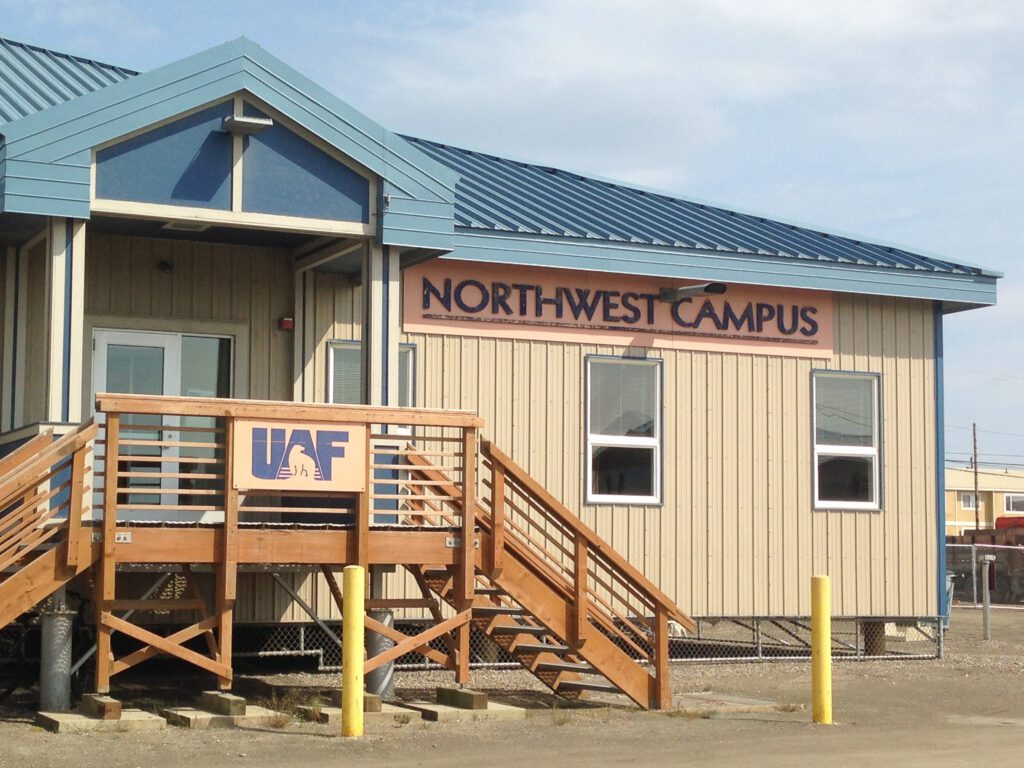Strong earthquake activity continues near Noatak, with a strong aftershock recorded last week that has become the third powerful temblor in what is now a series of strong quakes and potent aftershocks in just the last two months.
Natasha Ruppert, a seismologist with the Alaska Earthquake Center in Fairbanks, said Thursday’s 4.6 magnitude aftershock struck just before 10:30 p.m. about 18 miles northeast of Noatak.
“This one [is] in almost exactly the same area, so this one was another large aftershock,” Ruppert said—a lingering jolt in the wake of the powerful 5.6 magnitude rumble felt April 18, the strongest quake in the region in more than 30 years.
“They all are in the same area, but basically the main shock was … in April 18,” Ruppert said. “There was another large magnitude 5.5 earthquake [on May 3.]” The April quake was followed by nearly 100 aftershocks (represented by blue circles in the above image), five of which were magnitude 4.0 or stronger and one that registered a 5.3 magnitude. The early May quake, though slightly weaker than its April predecessor, was similarly followed by strong aftershocks, seven of which were of magnitude 4.0 or more.
After that earlier May quake, the Earthquake Information Center traveled to Kotzebue and Noatak to install sensors closer to the activity.
“We are able to tell, now with new equipment, we are actually seeing that these events are a little bit more shallower, closer to the surface, than what we thought before,” Ruppert said. “We are able actually to compute locations for these earthquakes much more accurately,” as a result of the new sensors, she added.
Ruppert said the remote nature of the far western Brooks Range means there’s still no firm scientific consensus for what faults are causing earthquakes and other tectonic activity in that region of western Alaska.
More accurate readings on these quakes and aftershocks, she said, could help build that consensus.
“This particular earthquake sequence is just another piece of the tectonic puzzle that we are trying to build for that region,” she said.
As part of their summer fieldwork, Ruppert said a team from the Earthquake Center will be visiting Nome this July for continued work in western Alaska.







